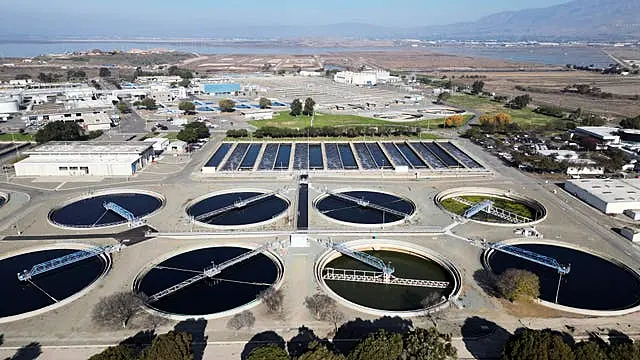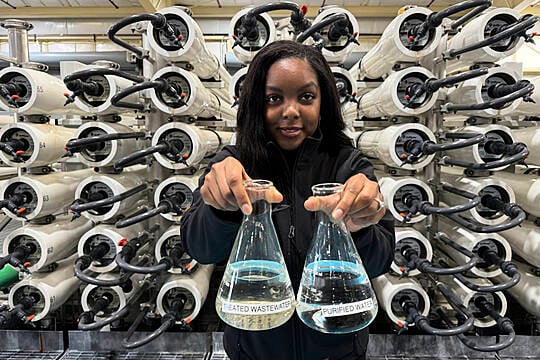California water agencies could soon turn wastewater into drinking water.
The California Water Resources Control Board on Tuesday approved new rules for turning water from toilets and other uses into drinking water.
State officials believe the rules will help the drought-prone state have a more reliable source of drinking water.
California is the second state to approve statewide regulations for the direct use of recycled wastewater. Colorado approved similar regulations last year.
The rules require water agencies to let customers know before they start doing this. Water agencies in San Diego and Los Angeles already have plans to recycle wastewater.
The state has struggled for decades to have a reliable source of drinking water for its more than 39 million residents. And it signals a shift in public opinion on a subject that as recently as two decades ago prompted backlash that scuttled similar projects.
Since then, California has been through multiple extreme droughts, including the most recent one that scientists say was the driest three-year period on record and left the state’s reservoirs at dangerously low levels.
“Water is so precious in California. It is important that we use it more than once,” said Jennifer West, managing director of WateReuse California, a group advocating for recycled water.
California has been using recycled wastewater for decades. The Ontario Reign minor league hockey team has used it to make ice for its rink in Southern California. Soda Springs Ski Resort near Lake Tahoe has used it to make snow. And farmers in the Central Valley, where much of the nation’s vegetables, fruits and nuts are grown, use it to water their crops.
But it has not been used directly for drinking water. Orange County operates a large water purification system that recycles wastewater and then uses it to refill underground aquifers. The water mingles with the groundwater for months before being pumped up and used for drinking water again.

California’s new rules will let — but not require — water agencies to take wastewater, treat it, and then put it back into the drinking water system.
The rules will require the wastewater be treated for all pathogens and viruses, even if the pathogens and viruses are not in the wastewater.
That is different from regular water treatment rules, which only require treatment for known pathogens, said Darrin Polhemus, deputy director of the division of drinking water for the California Water Resources Control Board.
In fact, the treatment is so stringent it removes all the minerals that make fresh drinking water taste good — meaning they have to be added back at the end of the process.
“It’s at the same drinking water quality, and probably better in many instances,” Mr Polhemus said.
The rules require water agencies to tell customers about the recycled water before they start doing it.
In San Jose, local officials have opened the Silicon Valley Advanced Water Purification Centre for public tours “so that people can see that this is a very high tech process that ensures the water is super clean”, said Kirsten Struve, assistant officer for the water supply division at the Santa Clara Valley Water District.
“We live in California where the drought happens all the time. And with climate change, it will only get worse,” Ms Struve said. “And this is a drought resistant supply that we will need in the future to meet the demands of our communities.”







